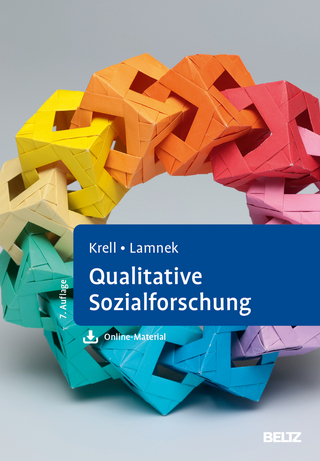Stress, Health, and the Social Environment
Springer-Verlag New York Inc.
978-0-387-90293-7 (ISBN)
Lese- und Medienproben
- Titel ist leider vergriffen;
keine Neuauflage - Artikel merken
There is growing evidence that it is phys- navigational skills, such as the sighting of stars with intuitive feeling for ocean swells iologically possible for the left hemisphere of and other subtle cues, tiny populations were the brain, which deals with logic and lan- maintained in communication over vast dis- guage, to be cut off from the right hemi- tances.
1 A historical introduction and theoretical concept.- Donnison's Civilization and Disease.- Halliday's Psychosocial Medicine: A Study of the Sick Society.- Emotion as a driving force in evolutionary biology.- Cannon and stress; Selye and distress.- Wolff's Stress and Disease.- Hinkle's studies of sociocultural changes and health.- Holmes-Rahe life change and illness susceptibility scale.- Theoretical mechanisms of psychosomatic disease.- Social environment as initiator of a chain of events.- Our format: from stimulus to pathology.- Summary.- 2 Basic patterns of social interaction.- The basic patterns.- Territory in relation to dominance and subordination.- Dominance and subordination in monkeys.- Conflict behavior in rhesus monkeys.- Dominance and subordination in man.- Depression and loss of status.- Male and female patterns of behavior.- Male-female differentiation in the kibbutz.- Attachment behavior in female mice.- Maternal attachment in primates.- Mother-infant attachment in man.- Generalization of attachment during maturation.- The wish to be held and the need for attachment.- Human sexuality as a behavioral reward system.- Behavior of the aged food gatherer.- Summary.- 3 Inherited behavioral patterns as social assets.- Normal behavior patterns of mice.- A disordered rodent society.- Normal primate behavior patterns.- A disordered primate society.- Normal behavior patterns of hunter-gatherers.- A disordered primitive human society.- Summary.- 4 The critical role of early experience and the programming of behavior.- The critical role of early experience.- Socialization in mice and early experience.- Socialization in subhuman primates and early experience.- Programming of behavior in man and early experience.- Innate facial expressions and body gestures in man.- Summary.- 5 Monitoring behavioral disturbances in experimental social systems.- Concepts and reasons for monitoring.- Basic types of behavioral monitoring.- Techniques for producing behavioral disturbances.- Primate experiments.- Rodent experiments.- Comparison of results for mice and primates.- Summary.- 6 The role of the neocortex and the limbic system in social interaction.- Introduction: man's four brain systems.- The evolutionary origin of lateralization.- Functional differences between the two hemispheres.- Lateralization of emotion.- Cerebral lateralization and sexual differentiation in man.- The limbic system: affect and programmed behavior.- The hippocampus and territory: the amygdala and reward.- Patterns of thinking and susceptibility to psychosomatic disease.- Experimental sleep disturbance and failure of communication between the limbic system and the neocortex.- Summary.- 7 Neuroendocrine responses to social interaction.- The frontal lobes and amygdalar and hippocampal function.- The amygdala and Cannon's sympathetic adrenal-medullary defense pattern.- Peripheral effects of the sympathetic adrenal-medullary response.- The hippocampus and adrenocortical secretion.- Depression and the pituitary-adrenocortical mode.- Endocrine characteristics of dominant and subordinate status in animals.- Endocrine characteristics of Type A and Type B personalities.- The inverse relation between the gonadotropic hormones and the defense and alarm reactions.- Summary.- 8 Functional and structural changes in response to psychosocial stimulation.- Distinction between Cannon and Selyean stress.- Changes primarily related to the sympathetic adrenal-medullary response.- Changes primarily related to the pituitary adrenal-cortical response.- Adrenal-cortical hormones and myocardial damage.- Psychosocial effects and immune response mechanisms.- Neuroendocrine mechanisms and mammary tumor formation.- Summary.- 9 Production of disease in animals by psychosocial stimulation.- Effects of acute psychosocial stimulation.- Effects of chronic psychosocial stimulation.- Lack of informational feedback and pathophysiology.- Chronic psychosocial stimulation and blood pressure elevation in mice.- Psychosocial factors and arteriosclerosis in CBA mice.- Rate of development of pathologic changes.- Psychosocial stimulation and renal damage.- Acceleration of pathologic changes by caffeinated beverages.- Summary.- 10 Pathophysiologic consequences of human social disturbance.- Tough and easy cultures.- Cardiovascular disease in Roseto.- Friedman and Rosenman's Type A versus Type B behavior pattern.- Monastic life and coronary heart disease.- Contrasts between traditional Japanese and American cultures.- Coronary heart disease in acculturated Japanese-Americans.- Myocardial infarction in former medical students.- Bereavement and myocardial infarction.- Blood pressure and cultural change.- Psychosocial factors, salt, and hypertension.- Cancer of the lung and psychosocial parameters.- Psychologic attributes of breast cancer.- Summary.- 11 The prevention and treatment of detrimental effects in the psychosocial environment.- Natural defenses against stressful events.- Individual coping behavior: conservation-withdrawal and group-oriented responses.- Psychosocial assets and the group.- Social support as a moderator of life stresses.- Combat studies of group-coping mechanisms.- Small groups and the control of psychosocial stimulation.- Relaxation response and biofeedback in the control of hypertension.- Physiologic mechanisms and the relaxation response.- The relaxation response in a religious context.- The cultural canon as a social asset.- Loss of the cultural canon and social breakdown.- The compensatory role of religion in a culture.- An effective cultural canon protects against disease.- Conclusions.- Glossary of sociobiologic terms.- Author index.
| Erscheint lt. Verlag | 21.12.1977 |
|---|---|
| Reihe/Serie | Topics in Environmental Physiology and Medicine |
| Zusatzinfo | biography |
| Verlagsort | New York, NY |
| Sprache | englisch |
| Gewicht | 750 g |
| Themenwelt | Geisteswissenschaften ► Psychologie ► Sozialpsychologie |
| Medizin / Pharmazie ► Medizinische Fachgebiete ► Arbeits- / Sozial- / Umweltmedizin | |
| ISBN-10 | 0-387-90293-7 / 0387902937 |
| ISBN-13 | 978-0-387-90293-7 / 9780387902937 |
| Zustand | Neuware |
| Haben Sie eine Frage zum Produkt? |
aus dem Bereich



